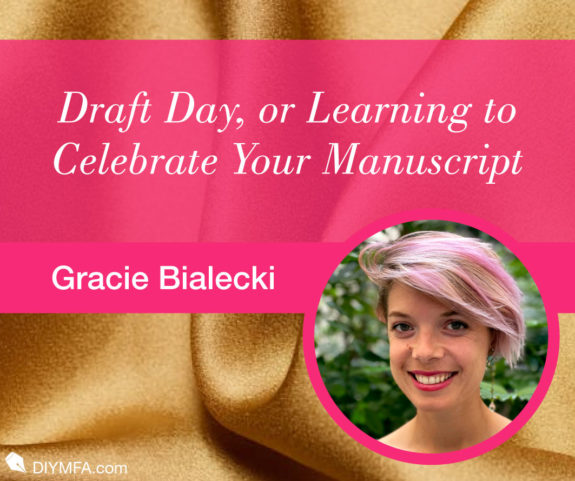Last summer, on a hectic day before a month-long vacation, I went to the print shop for my final errand. I’d spent the past ten months working on the second draft of my latest novel—submitting chapters to my writing group, fixing the clunky narrative arc, and generally solidifying my sketchy first pass. Now the dogged hours of work had culminated in hitting my self-imposed deadline and declaring this version ready to print.
After explaining that I wanted a bound manuscript with the title and dedication pages single-sided, the clerk nodded and spent long minutes clicking around his computer while I sweated quietly behind my mask. When the printer finally whirred to life, the entire work emerged single-sided, so the clerk canceled the job and resumed his lethargic mousing. Back home there were bags to pack, a fridge to clear, literary beach reads to choose.
But when the printer grumbled its acquiescence and pages started swishing out with text on both sides, my impatience lifted—those were my words, that was my book.
Why Print?
The idea of printing my manuscripts came from a former professor, the writer Jonathan Lethem, who once said he didn’t know what millennial writers considered drafts. With everyone editing on computers, how did we know when a version was finished and another beginning?
This reflection stuck with me, and I decided to start printing my manuscripts and having my own personal Draft Day. Even if it killed trees, took longer, and cost more than it should have—it was worth it.
Logistical Note: If you’re concerned about money or the environment, another option is exporting your book as a .pdf or .epub and reading it digitally. All you need to do is to take yourself out of the document you’ve been staring at and have a new, separate version.
In addition to being a mini-celebration, Draft Day has also allowed me to change my novel-writing process from an amorphous revision blob into a series of four distinct drafts:
I. Discovery Draft
In this draft, all you’re doing is getting the story down. I always write my chapters long-hand before typing them up, so for me, this draft is about getting that madness into a computer.
Instead of worrying about crafting flawless sentences or developing every single plot point, the goal is simple: to have a story that’s readable from start to finish.
II. Growth Draft
And after reading the Discovery Draft, there’s always lots to fix. While the Growth Draft course corrects and fills in the frame of the Discovery Draft, it can also go off in new directions.
Give yourself permission to be fearlessly creative and let the draft grow organically.
III. Definite Draft
Before you start editing what will be the Definite Draft, reflect on what your novel is truly about. I might write a dramatic summary or an author’s statement, so I have a definite sense of what I want this work to achieve and ensure each scene is working towards that vision.
This is also the manuscript I share with writer friends, or a writing group, to get an outside perspective on how the work is holding together.
IV. Final (ish) Draft
I always get frustrated when my friends congratulate me on “finishing my book.” Just because I’ve written through to the end doesn’t mean I don’t have months of editing ahead. And even if I’m sending it to agents or editors, there’ll be more work after that.
Hence, the Final(ish) draft—the one you’ll send to anyone whose time you didn’t want to waste on the earlier ones. This draft is the best you can do at this given moment while acknowledging that it’s likely to change before it’s released to the masses.
These drafts are like the four years of high school:
Freshman year
You’re learning how to open your locker and light a Bunsen burner in the lab. Maybe it’s fumbling and nervous, but your Discovery Draft is still sneaking under the bleachers for its first kiss.
Sophomore year
Instead of figuring out how to get to your classes, you’re testing into Advanced French or joining Math League. Your Growth Draft builds on last year’s discoveries and becomes more self-aware, and maybe even a little suave.
Junior year
It’s time to get serious—college is on the horizon and your grades matter. As you work on your Definite Draft, you’re calm, confident, and don’t need an English teacher’s domineering red pen to see what needs fixing.
Senior year
Is your time to shine. Your Final(ish) Draft is freshly showered and has a fetching new haircut under its graduation cap. Whatever happens, it’s ready for the next step.
And here’s the best part…
In the print shop, I was the last customer waiting as my Word document was transformed into 197 sheets of paper. While the sleepy printer thunked and the stack of pages grew, I put my sweaty agitation aside and looked on in pride. I wrote that, I thought. Those are my words being printed, those were my pages bound up into a book.
What had started two years ago as a scrawled sentence on a train ride had evolved into a readable novel. Whatever happens along the road to publication, I have proof I’ve come this far. And when I’m done annotating, I’ll put this manuscript on the shelf with its classmates, all of them silently cheering me on.
Tell us in the comments: How do you distinguish between one draft and another?

Gracie Bialecki is a writer, literary coach, and workshop facilitator who lives in Paris, France. Her work has appeared in various publications including Catapult and Epiphany Magazine where she was a monthly columnist. Bialecki is the co-founder of the storytelling series Thirst, a poetry editor at Paris Lit Up, and the author of the novel Purple Gold (ANTIBOOKCLUB). You can find her on her website or follow her on Twitter.







